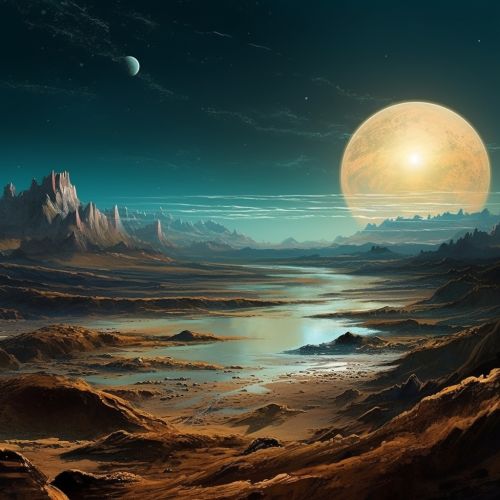Titan
Introduction
Titan, also known as Saturn VI, is the largest moon of Saturn and the second-largest natural satellite in the Solar System. It is the only moon known to have a dense atmosphere, and the only known body in space, other than Earth, where clear evidence of stable bodies of surface liquid has been found.
Discovery and Naming
Titan was discovered on March 25, 1655, by the Dutch astronomer Christiaan Huygens. Huygens was inspired by Galileo's discovery of Jupiter's four largest moons in 1610 and his improvements of the telescope. He named it simply "Saturni Luna" (or Saturn's moon), publishing in the 1655 tract De Saturni Luna Observatio Nova (A New Observation of Saturn's Moon).
Physical Characteristics
Titan is primarily composed of water ice and rocky material. It is 50% larger (in volume) than Earth's moon and 80% more massive. It is the second-largest moon in the solar system, after Jupiter's moon Ganymede, and it is larger by volume than the smallest planet, Mercury, although only 40% as massive.


Atmosphere
Titan's atmosphere is primarily nitrogen; minor components lead to the formation of methane and ethane clouds and nitrogen-rich organic smog. The climate—including wind and rain—creates surface features similar to those of Earth, such as dunes, rivers, lakes, seas (probably of liquid methane and ethane), and deltas, and is dominated by seasonal weather patterns as on Earth.
Surface
Titan's surface is relatively smooth, although there are mountains. The surface has also been sculpted by rivers and possibly volcanic activity. The surface temperature is about −290 degrees Fahrenheit (−179 degrees Celsius). Because of the extreme cold and the presence of methane, it rains liquid methane on Titan, which with the geology on the surface, creates methane lakes.
Exploration
The first spacecraft to visit Titan was Pioneer 11 in 1979, which confirmed that Titan had a thick atmosphere. The detailed exploration of Titan, however, has been conducted by the Cassini–Huygens mission, launched in 1997. The Huygens probe landed on Titan's surface on January 14, 2005, and returned data that provided fundamental insights into this enigmatic world.
